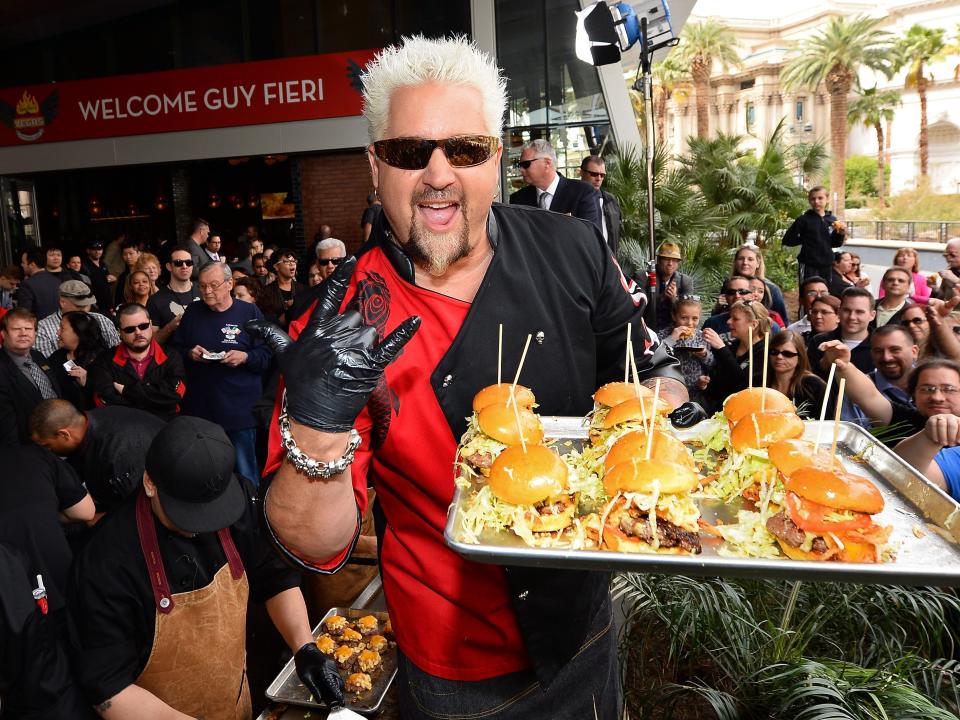Guy Fieri is betting on ghost kitchens sticking around. Here's why.

Guy Fieri owns a ghost kitchen chain, Guy's Flavortown Kitchen, with 175 locations.
Ghost kitchens exploded during the pandemic as restaurants looked for ways to keep sales up.
Fieri says that ghost kitchens will remain part of the industry even as the pandemic winds down.
Guy Fieri is a restaurant owner and TV star, and he knows the food industry in and out. Ghost kitchens aren't going anywhere, the star told Insider in an interview about his Super Bowl commercial for Bud Light Hard Soda.
Fieri, who owns more than 80 restaurant locations and concepts and 175 locations of virtual concept Flavortown Kitchen, recently told Insider about the challenges facing the restaurant industry right now, including inflation and a shortage of workers. "It's so difficult right now," he said.
To survive the unique challenges of the last two years, restaurants came up with ideas to keep business going aside from typical customers in dining rooms. Fieri pointed to ghost kitchens and relying on delivery orders as concepts that emerged and worked for restaurant owners.
Ghost kitchens, also called virtual brands or cloud kitchens, are restaurants that only serve customers through takeout and delivery, often operating out of the kitchen of another business. Guy's Flavortown Kitchens mostly operate from restaurants including Bertucci's and Buca di Beppo, Eater reported. While there will always be demand for traditional dining-out experiences, Fieri told Insider, he predicts ghost kitchens like his own will continue playing a big role in the industry now that customers have been exposed to the convenience and variety the concepts offer.
The concepts are only becoming more relevant as several big players compete in the growing sector. Reef Technology, which signed an agreement to open up 700 ghost kitchens with Wendy's, builds mobile kitchens in parking lots and garages to make food for delivery with fast food partners. It's the largest of these operations in North America, with 5,000 locations. Ghost Kitchens brand opened its first US location in a Walmart in 2021.
Ghost kitchens exploded during the early days of the pandemic when brands scrambled to set up delivery infrastructure and recoup some of the sales lost by dining room closures. Now, nearly two years into a still-raging pandemic, they make sense for a different reason: they don't require as many workers. Orders are typically made digitally, and there's no need to for workers to spend time talking to customers, cleaning tables, or other tasks necessary in a more traditional restaurant.
Market research firm Euromonitor predicts that the ghost kitchen segment could be a $1 trillion industry by 2030.
"Labor savings are no doubt a big benefit driving the growth of this segment," senior analyst at Pitchbook Alex Frederick told Restaurant Dive. But, "brick-and-mortar restaurants have evolved to maximize dine-in floor space and minimize kitchen space in an effort to maximize profits. Most restaurants aren't optimized for delivery," he said.
Do you have a story to share about a retail or restaurant chain? Email this reporter at mmeisenzahl@businessinsider.com.
Read the original article on Business Insider

 money
money 